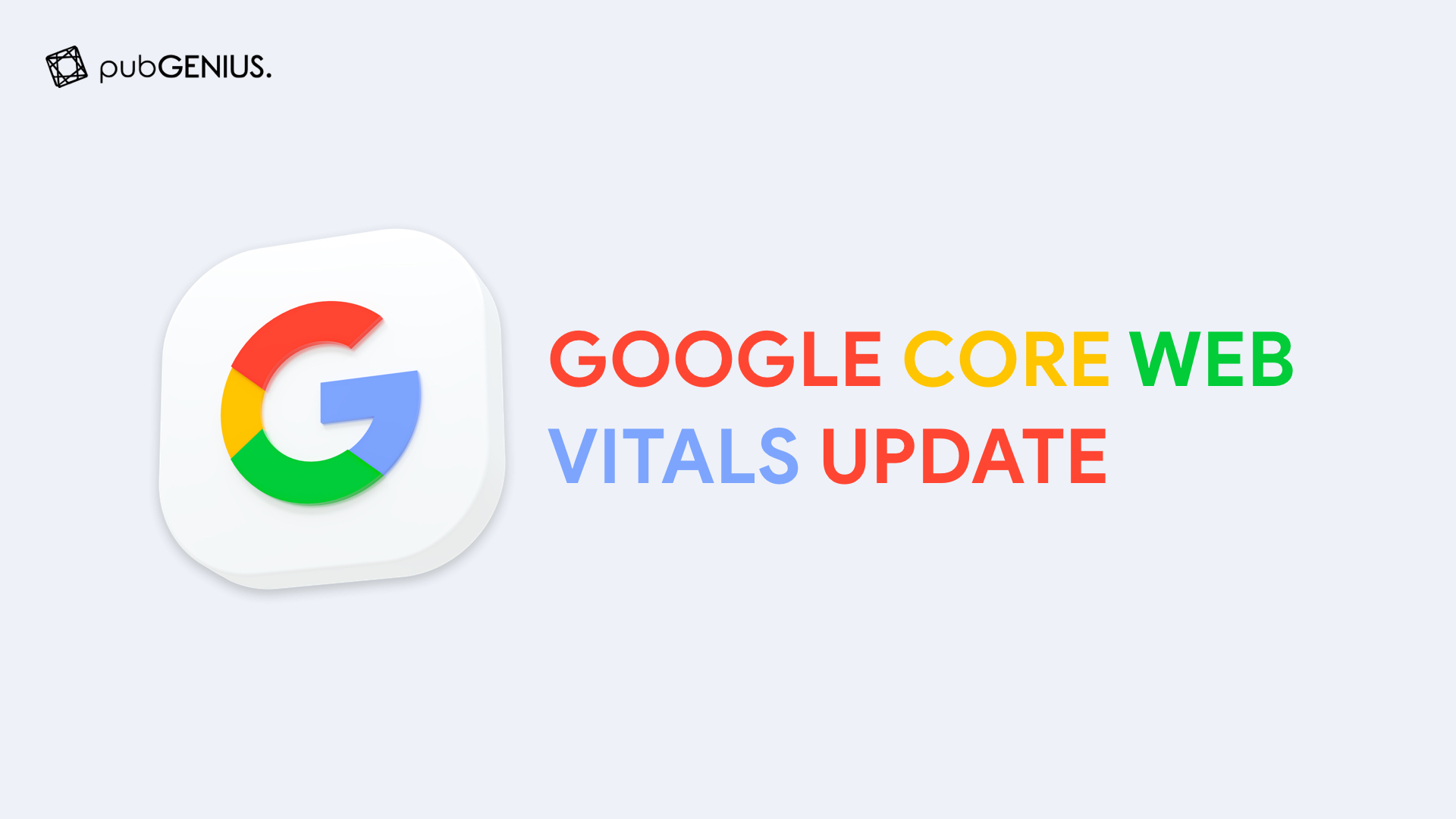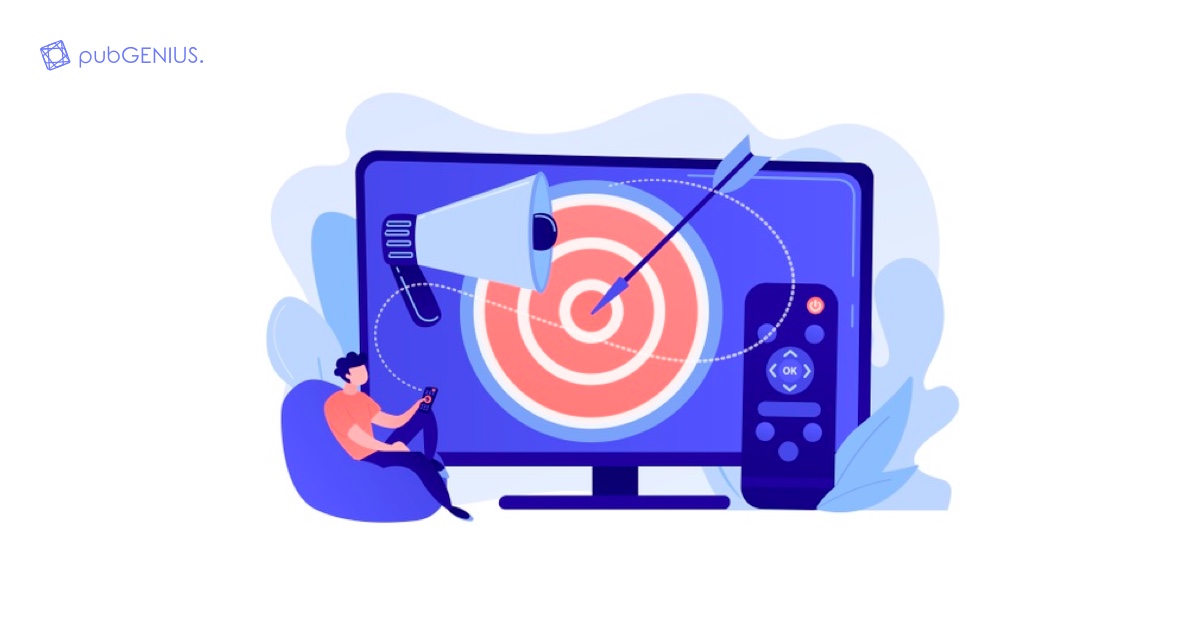Google Core Web Vitals Update : What Publishers Need to Know
July 1, 2021
2021 is an exciting time for the online publishing and ad tech community. Google is rolling out a major broad core algorithm update, which for the first time is divided into two major updates. What parts of the Google Core Web Vitals Update will effect you?
The first update was just finished rolling out on June 12th. After that, on June 15th, Google announced on Twitter that the slow process of rolling out the page experience update has started and will be completed by the end of August 2021.
The new Google page experience algorithm update will be a significant change which can affect the rankings and revenue numbers of the website. We thought that now, during its initial roll out, is the perfect time to talk about it in more detail.
What is Google Page Experience Update?

Originally, Google announced the page experience update back in May 2020, planning to launch in the spring of 2021. Eventually decided to begin the roll out in June 2021 and make it gradual, with the new algorithm having a full impact on rankings by the end of August 2021. So if you are a web publisher, you still have time to prepare your websites for the changes.
-
What is Page Experience in Google Search?
Google defines page experience as a set of signals of how users perceive the interaction with a page beyond its pure information value. In other words, it is all about measuring the quality of user experience of a website.
“We believe that providing information about the quality of a web page’s experience can be helpful to users in choosing the search result that they want to visit. On results, the snippet or image preview helps provide topical context for users to know what information a page can provide. Visual indicators on the results are another way to do the same, and we are working on one that identifies pages that have met all of the page experience criteria. We hope the Web Vitals metrics and thresholds will provide publishers, developers and business owners with clear and actionable ways to make their sites part of fast, interruption-free journeys for more users,” Google Search experts explained.
As you can see, Core Web Vitals is the essential component of measuring page experience by Google.
-
What is Core Web Vitals?
Core Web Vitals is a set of metrics that measure real-world user experience. For loading performance, interactivity, and visual stability of the web page.
It is the foundation of the page experience update, but not its only component as Google will also consider existing search signals, such as mobile-friendliness, safe-browsing, HTTPS, and intrusive interstitial guidelines, as part of the user experience measurement.
Google Core Web Vitals Update

Google Core Web Vitals are the subset of Web Vitals, which is an initiative by Google to provide unified guidance for quality signals that are essential to delivering a great user experience on the web.
And the Core Vitals metrics will be applied to all pages, should be measured by all site owners. This will be surfaced across all Google tools, the search giant notes. Each of the Core Web Vitals represents a distinct facet of the user experience, is measurable in the field, and reflects the real-world experience of a critical user-centric outcome.
According to Google’s plan, the metrics that make up Core Web Vitals will evolve over time. The current set is focused on three aspects of the user experience: loading, interactivity, and visual stability.
These aspects are represented by the following three core metrics.
-
Largest Contentful Paint (LCP)
Largest Contentful Paint measures loading performance. It basically reports the render time of the largest image or text block visible within the viewport, relative to when the page first started loading. As Google Search experts explained, LCP is an important user-centric metric for measuring perceived load speed of a website.
A fast LCP helps to reassure the user that the page is useful. To be considered ‘good’ by Google, the LCP of your website should be less than 2.5 seconds from the initial load.
-
First Input Delay (FID)
First Input Delay measures interactivity or the time from first page interaction to when the browser begins processing event handlers to that interaction. Interactions are when a user clicks on a link, taps on a button or activates some other custom JavaScript-powered control.
So FID is another important user-centric metric for measuring load responsiveness. It basically quantifies the experience users feel when trying to interact with unresponsive pages.
So in order for your page to be considered usable, FID should be low, 100 milliseconds or less.
-
Cumulative Layout Shift (CLS)
Cumulative Layout Shift measures visual stability of the website. It is a measure of the largest burst of layout shift scores for every unexpected layout shift that occurs during the entire lifespan of a page. A layout shift is any time when a visible element of the web page changes its position from one rendered frame to the next.
So CLS is the third and final (for now at least) user-centric metric, focused on measuring how often users experience unexpected layout shifts. In order for your page to be ranked high in user experience, your CLS score should be low. 0.1 or less is the recommended score by Google.
Tools for improving Page Experience and measuring Core Web Vitals

There are a variety of tools publishers can use to measure the Core Web Vitals of their pages and start improving and optimizing their user experience.
Here are some of the most important tools for these purposes.
Google Search Console Page Experience Report shows across all the user experience metrics, not just the Core Web Vitals. It allows you to have an overview of your website’s performance and start investigating issues if there are any.
PageSpeed Insights reports on the lab and field performance of a page on both mobile and desktop devices. The tool provides an overview of how real-world users experience the page and a set of actionable recommendations on how a site owner can improve page experience.
Lighthouse is an automated website auditing tool for identifying issues and finding opportunities to improve the user experience. It measures several dimensions of user experience quality in a lab environment, including performance and accessibility.
Mobile-Friendly Test allows you to check if your page is mobile-friendly.
And Google Security Issues Report helps to check your websites for safe-browsing issues.
Summary

Of course, these are just the basics on the topic of Google’s page experience update. User experience is measured today and what are the ways to improve it. We will continue to publish articles on this subject, covering tools for monitoring and optimizing user experience. As well as shedding light on other aspects of this issue from the publisher’s perspective.
Feel like your website needs some user experience boost but don’t have time to learn all these analytical tools? Then maybe you should just outsource this kind of work to professionals and focus on your core income-generating activities.
pubGENIUS’ ad ops specialists are well-versed in the best practices and trends of the industry. We can maintain your ad inventory to be operating with maximum capacity at all times.
Get in touch with pubGENIUS Team to get free consultation 🙂
